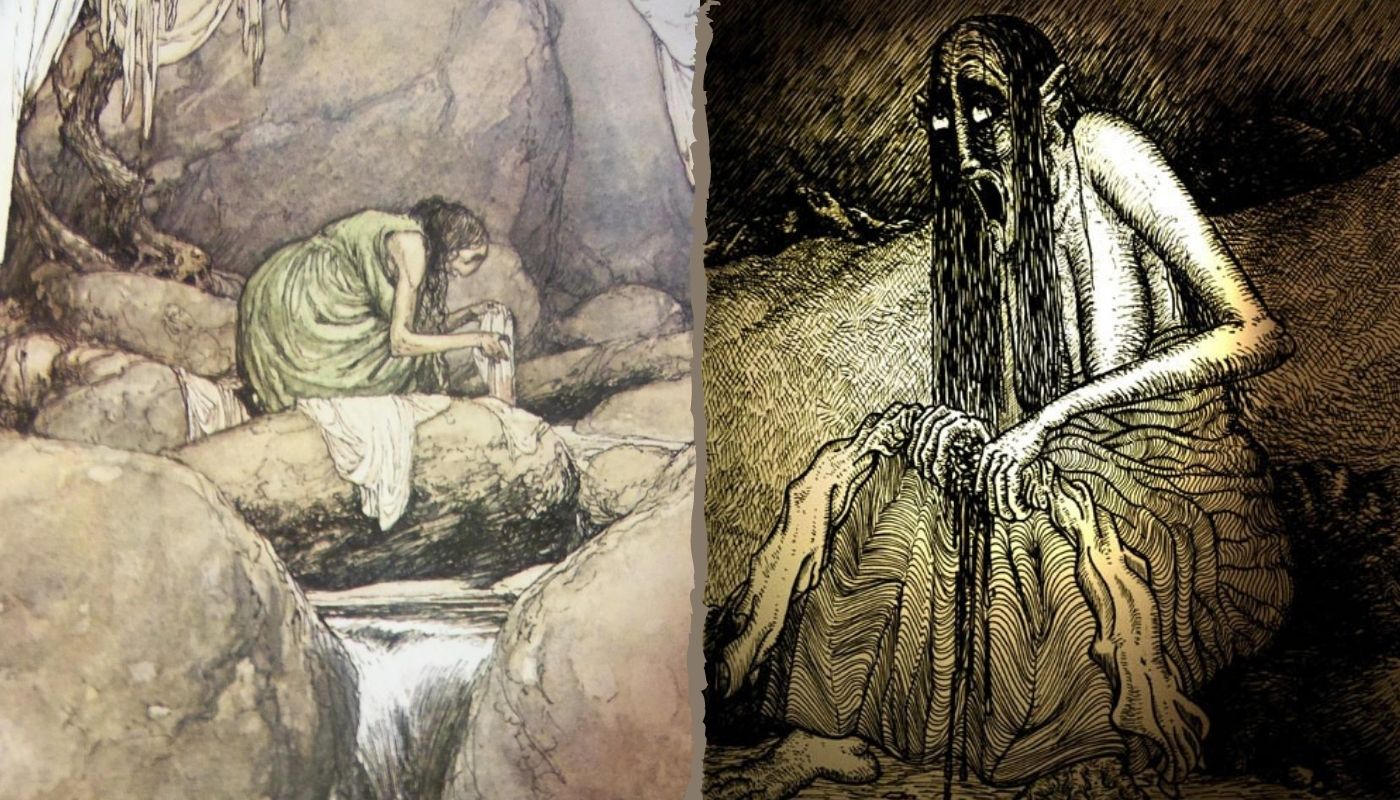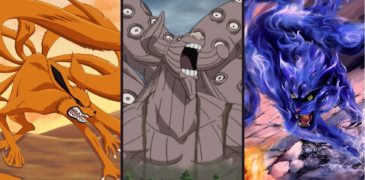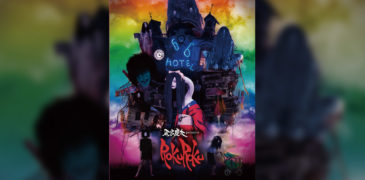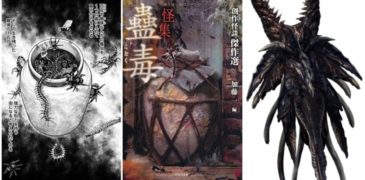
The Washers at the Ford are death spirits, harbingers of doom, now often classified among the Sidhe. Their first documented appearances are in Irish sagas, most notably the tale of Cu Chulain, Champion of Ulster. These spirits of doom appear in Ireland and the Scottish Highlands. (Scottish variants are sometimes called Little Washerwomen.) Their name explicitly describes who they are, what they do, and where they are found.

While there are variations, the standard Washer at the Ford is encountered in the guise of a haggard, distraught woman with disheveled hair, standing in the ford of a river, keening and wailing while laundering blood-soaked linens. She is mourning for someone; traditionally if you can see her and make eye contact that means that she’s mourning for you, although this is not always the case. If the doomed person is sufficiently heroic and deemed worthy of public mourning, the Washer foretelling his or her death may be visible to many others too.
Not all Washers at the Ford are identical. There is a Scottish Washer who manifests as a little old lady with only one nostril and red webbed feet: if you can sneak up and grab her before she sees you, she’s obliged to reveal for whom she mourns and grant you three wishes, which might include redemption of the doomed.
Modern retellings of encounters with Washers at the Ford tend to be poetic and romantic with the Washers envisioned as ethereal, wraith-like ghosts, something like White Ladies genteelly doing laundry. In fact, many old stories are pretty grisly. The Washers wash more than linens. Sometimes they wash severed heads, limbs, assorted body parts, bloody weapons, and armor. The river runs scarlet with blood and gore. There’s no doubt that they are death goddesses.
In genera, there are a couple of exception, the Washers do not cause death. Like their sister spirits, the Banshees, they only announce it. Many Washers are anonymous, serving as death harbingers may be their exclusive spiritual role. However, many famous Irish goddesses also double as Washers, especially when the death of a true hero is imminent. These include Badbh, the Morrigan, and Nemain.

Naruto: The Mythology Behind The Bijuu
It’s safe to say that, for most, Naruto was their first exposure to Japanese media and culture. With its larger-than-life fight scenes, solid story arcs and beautiful artwork, it has…
The Kisaragi Station – Japanese Urban Legend
The Kisaragi Station is a Japanese urban legend originating on the 2Ch message boards in 2004 and revolves around the private railway at Shizuoka. Shared as an anecdote in the…
Rokuroku: The Promise of the Witch (2018) Film Review – An Exceedingly Entertaining Haunted Funhouse Ride
There is something incredibly endearing about anthology films, especially those in the horror genre. In fact, I would wager to say that this format of filmmaking works best with horror,…
Four Unsettling Japanese Curses
When studying the occult, you will learn that each culture has its own dealings with the concept of magic. Be it through divine blessings, nature spells, or via the influence…



